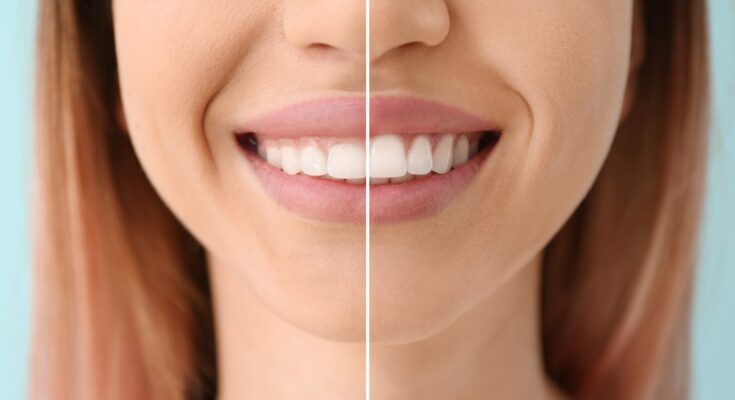Global Dental Contouring Market was worth $2.53 billion US dollars. AMR Group projects that the market will reach US$ 4.20 billion by 2032, growing at a CAGR of 6.3 percent between 2022 and 2032.
Industry Overview
Dental contouring, also known as enameloplasty or tooth reshaping, is a cosmetic dental procedure that involves removing small amounts of tooth enamel to improve the appearance of teeth. It is typically used to correct minor imperfections such as small chips, uneven teeth, or slightly overlapping teeth. During the procedure, the dentist uses a special tool to gently remove small amounts of enamel from the tooth’s surface. The amount of enamel removed is minimal and usually only involves a few millimeters. The dentist then carefully shapes and polishes the tooth to give it a more even and attractive appearance. Dental contouring is a relatively quick and painless procedure that can be completed in a single visit to the dentist. It is often combined with other cosmetic dental procedures such as teeth whitening, veneers, or bonding to achieve a more comprehensive smile makeover.
Market Dynamics
The market dynamics for dental contouring are driven by a combination of factors, including changing consumer preferences and advances in dental technology. One key factor driving the demand for dental contouring is the increasing emphasis on personal appearance and aesthetics. Many people are looking for ways to improve the appearance of their teeth and smile, and dental contouring offers a relatively simple and non-invasive way to achieve this goal.
Request Free Sample Report: https://analyticsmarketresearch.com/sample-request/dental-contouring-market/76763/
Another factor contributing to the growth of the dental contouring market is the increasing availability of advanced dental technology. Modern dental tools and techniques have made the procedure safer, more effective, and more efficient, reducing the time and cost involved. Moreover, the growing awareness about dental health and the benefits of regular dental checkups have contributed to the market growth. As more people are becoming aware of the importance of dental health, they are seeking out cosmetic dental procedures such as dental contouring to improve the overall appearance of their teeth and smile. On the other hand, the high cost of the procedure and the limited availability of skilled professionals who can perform the procedure effectively may act as a constraint for market growth. Additionally, dental contouring is not suitable for all types of dental imperfections, and some patients may require more extensive procedures such as orthodontic treatment to achieve the desired results.
COVID Impact:
The COVID-19 pandemic has had a significant impact on the dental industry, including the dental contouring market. Some of the impacts of the pandemic on dental contouring include:
Reduced demand: During the pandemic, many people postponed non-essential dental procedures, including cosmetic procedures like dental contouring. This led to a decrease in demand for the procedure.
Changes in safety protocols: Dental practices have had to adopt new safety protocols to reduce the risk of COVID-19 transmission. This has included the use of personal protective equipment (PPE), enhanced cleaning and disinfection procedures, and changes to patient scheduling and waiting room procedures.
Supply chain disruptions: The pandemic has caused disruptions in the supply chain for dental equipment and supplies, which may have affected the availability of materials needed for dental contouring procedures.
Financial constraints: The economic impact of the pandemic has caused financial strain for many people, leading them to prioritize essential expenses over non-essential cosmetic procedures like dental contouring.
Tele-dentistry adoption: The pandemic has also led to the adoption of tele-dentistry services, which may provide alternative solutions for some dental issues. However, dental contouring typically requires an in-person visit, so this trend may have less impact on the market. Overall, the pandemic has had a mixed impact on the dental contouring market, with reduced demand and supply chain disruptions being offset somewhat by the adoption of new safety protocols and the gradual return of patients to dental practices.
Regional Trend
The demand for dental contouring may vary regionally due to differences in demographics, cultural norms, and the availability of dental services. Here are some regional factors that could impact the dental contouring market:
North America: The North American market for dental contouring is expected to be driven by the high demand for cosmetic dentistry procedures in the United States. The region has a well-established dental care industry, and dental contouring is commonly offered by many dental practices.
Europe: The European dental contouring market is expected to be driven by the high awareness of dental aesthetics and the growing popularity of cosmetic dental procedures. Countries such as the UK, Germany, and France are expected to lead the market due to their developed healthcare infrastructure and the availability of skilled professionals.
Asia Pacific: The Asia Pacific dental contouring market is expected to grow due to the increasing adoption of Western beauty standards and the growing middle class in countries such as China, India, and Japan. However, the market may be constrained by limited access to dental services and a shortage of skilled dental professionals.
Latin America: The Latin American dental contouring market is expected to be driven by the high demand for cosmetic dental procedures and a growing awareness of dental health. Brazil, Mexico, and Argentina are expected to lead the market due to their large populations and well-established healthcare systems.
Middle East and Africa: The Middle East and Africa dental contouring market may be constrained by limited access to dental services and a lack of awareness of cosmetic dentistry procedures. However, the market may be driven by the high demand for dental tourism in countries such as Turkey and the UAE.
Read This Complete Strategic Report: https://analyticsmarketresearch.com/reports/dental-contouring-market/76763/
Competitive Landscape:
The competitive landscape of the dental contouring market is composed of various players, including dental clinics, independent dental practitioners, and dental product manufacturers. Some of the major players in the market include:
Benco Dental: Benco Dental is a leading supplier of dental products, including tools and equipment used in dental contouring procedures.
Dentsply Sirona: Dentsply Sirona is a dental product manufacturer that produces a range of products, including instruments used in dental contouring procedures.
Henry Schein: Henry Schein is a distributor of dental products, including those used in dental contouring procedures.
3M: 3M is a global manufacturer of dental products, including those used in dental contouring procedures.
Danaher Corporation: Danaher Corporation owns several dental product companies, including Kavo Kerr, a manufacturer of dental equipment and instruments used in dental contouring procedures.
Patterson Companies Inc.: Patterson Companies Inc. is a distributor of dental products, including those used in dental contouring procedures.
The market is highly competitive, with many players offering a range of products and services. Companies are investing in research and development to improve the quality and efficiency of their products, as well as expanding their geographical reach to capture new markets. Additionally, some players are differentiating themselves by offering additional services such as virtual consultations, personalized treatment plans, and financing options.
Market Segmentation
The dental contouring market can be segmented based on several factors, including:
Type of Imperfection: Dental contouring can be used to correct various types of dental imperfections, including chipped or uneven teeth, slightly overlapping teeth, and pointy or misshapen teeth. The market can be segmented based on the type of imperfection that the procedure is intended to correct.
Age Group: The demand for dental contouring may vary depending on the age group, with younger individuals more likely to seek out cosmetic dental procedures. The market can be segmented based on age groups, such as adolescents, young adults, and older adults.
Gender: The demand for dental contouring may also vary by gender, with females more likely to seek out cosmetic dental procedures than males. The market can be segmented based on gender, with separate marketing strategies targeted towards each group.
End User: The dental contouring market can also be segmented based on the end user, with individual consumers, dental clinics, and cosmetic dentists as potential customers. Each end-user group may have different needs and preferences, requiring tailored marketing strategies.
Revenue Channels: The market can be segmented based on revenue channels such as direct sales, retail sales, and online sales. Dental clinics and independent practitioners can be targeted for direct sales, while retail and online sales can be targeted towards consumers.
Read Our More Blogs: https://www.linkedin.com/pulse/latest-developments-global-dental-composite-resins-market-tawar



